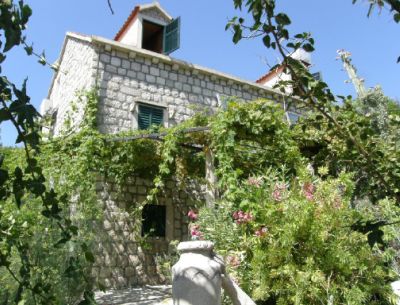15th century villa on beautiful Croatian island
This wonderful old stone villa is located on the car-free island of Lopud in Croatia and has sea views and vine-covered terraces


This unusual property is a delightful, historic, stone-built detached villa dating back to the 15th century which is located in an elevated position on the car-free island of Lopud in Croatia. The house has wonderful vine-covered terraces, a summer kitchen, a bbq and sea views from the upper level.
Currently run as a holiday lettings business, the house could equally be converted back to a private residence. Presently composed of three separate apartments (one on each storey) the villa provides a total of five bedrooms.

* Subscribe to Country Life and save
Outside is a well-stocked garden with lavender, roses, fruit trees and the terrace.
This property is rare on the market due to its sought-after island location with its sandy beaches, seasonal restaurants, bars and a harbour to enjoy all close by. The property is accessed by stairs up from the promenade which is just a few minutes away.
Lopud island is one of Dubrovnik's Elafiti islands. It's easily reached by local ferry (45 minutes) four times a day from Gruz harbour.
The guide price is £520,000. For further information please contact Savills on 020 7016 3740 or visit www.savills.co.uk/abroad.
Exquisite houses, the beauty of Nature, and how to get the most from your life, straight to your inbox.

